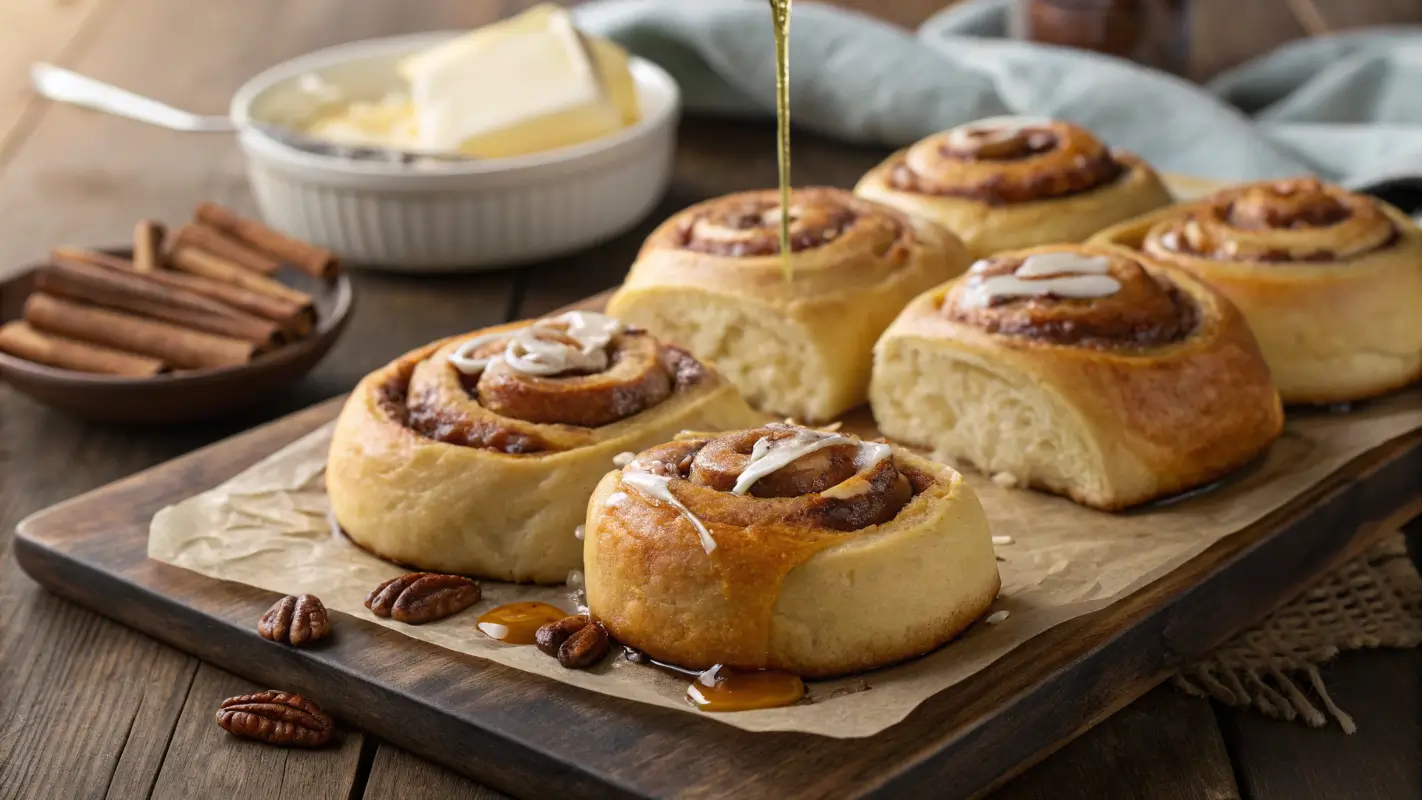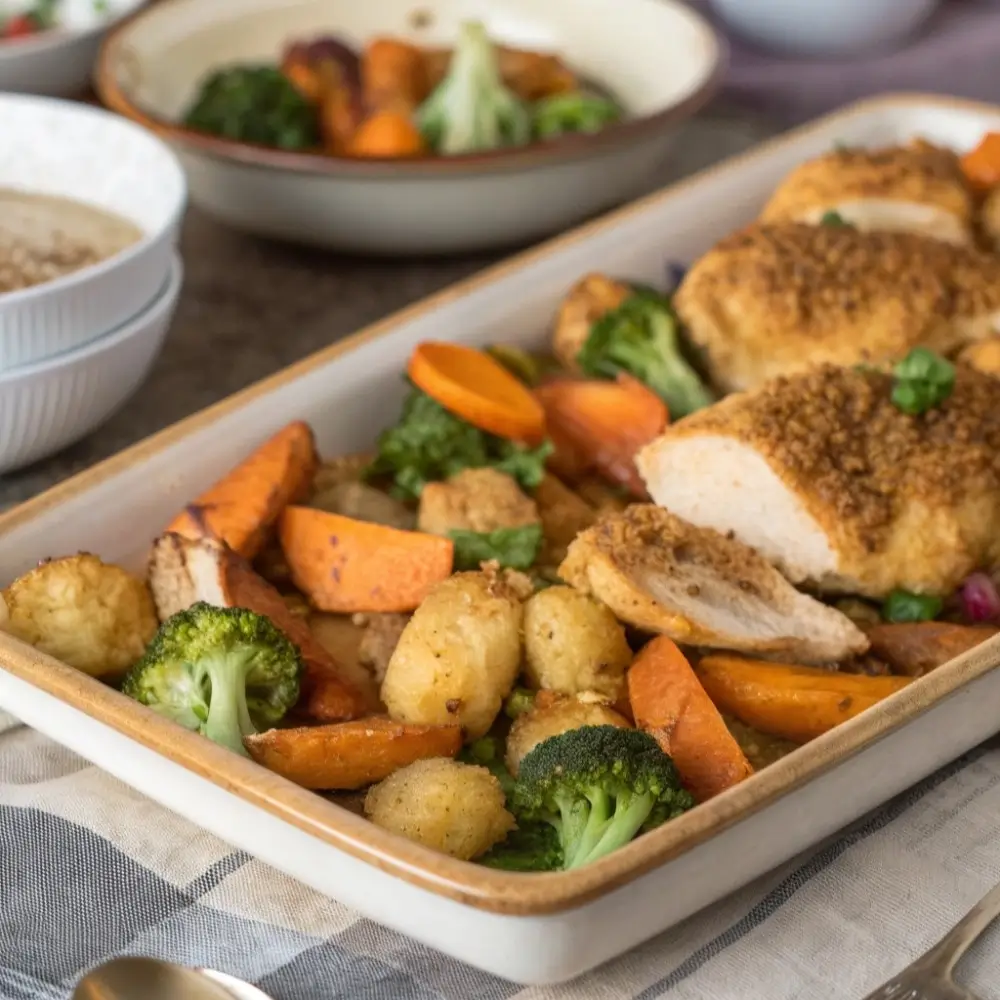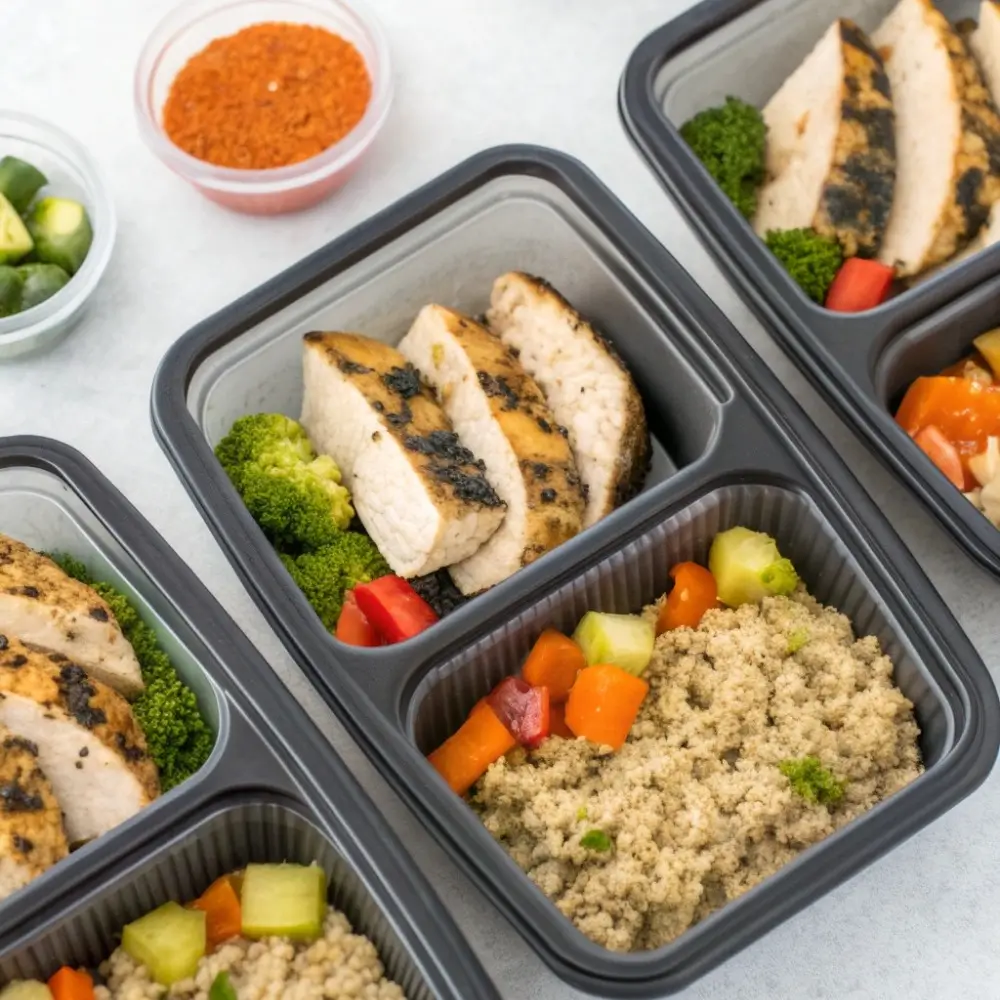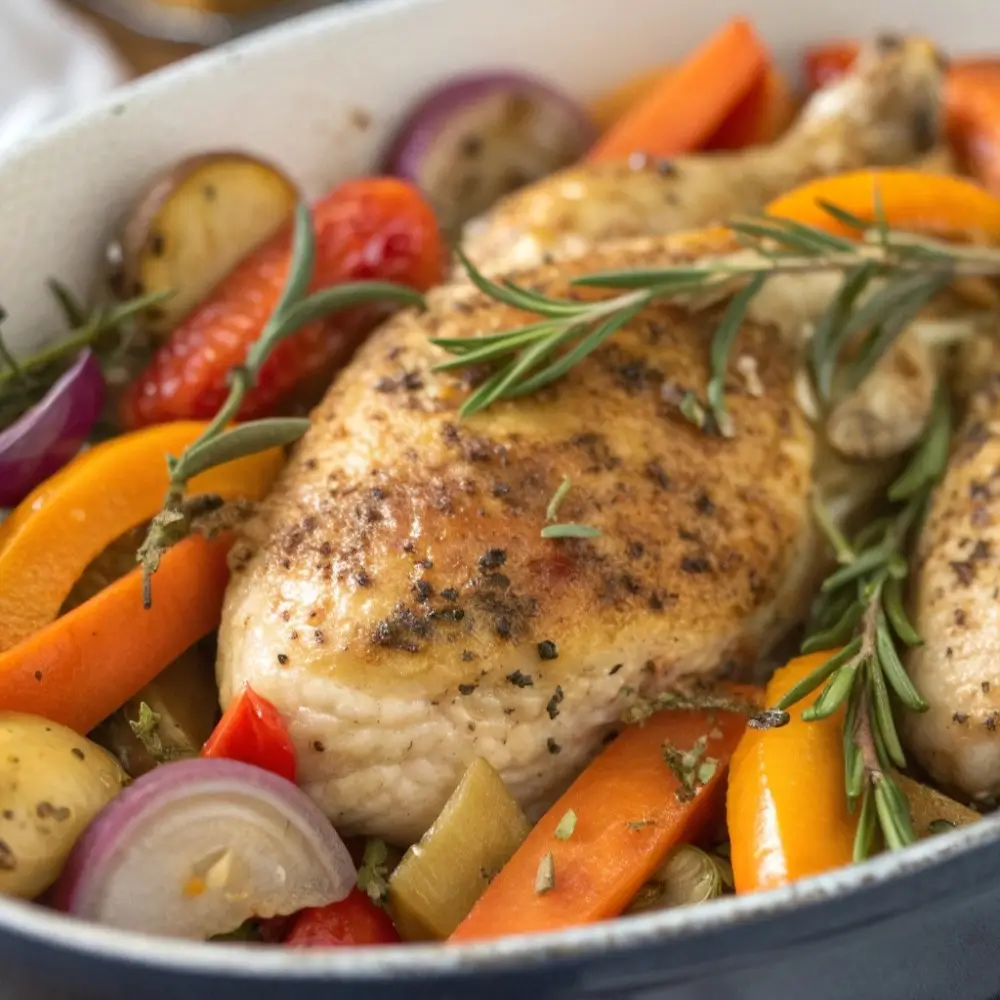Table of Contents
- 1 Introduction to Sourdough Cinnamon Rolls
- 2 Key Ingredients for Sourdough Cinnamon Rolls Recipe
- 3 How to Make Sourdough Cinnamon Rolls
- 4 Icing and Glaze Options for Sourdough Cinnamon Rolls
- 5 Sourdough Cinnamon Rolls Tips and Troubleshooting
- 6 Frequently Asked Questions about Sourdough Cinnamon Rolls
- 7 Creative Variations on the Sourdough Cinnamon Rolls
- 8 Conclusion and Final Thoughts
- 9 Sourdough Cinnamon Rolls Recipe
Introduction to Sourdough Cinnamon Rolls
There’s nothing quite like waking up to the scent of freshly baked cinnamon rolls. Now, imagine those rolls with a twist—fluffy, tangy, and bursting with flavor, thanks to sourdough. Sourdough Cinnamon Rolls Recipe are the perfect combination of soft, gooey goodness and a delightful depth of flavor that only a sourdough starter can bring.
But why opt for sourdough in your cinnamon rolls instead of the usual yeast? The answer lies in the magic of fermentation. Using a sourdough starter gives the rolls a unique, slightly tangy flavor and a softer, more airy texture. It’s a bit of a twist on the traditional recipe, but once you try it, you might never look back.
In this article, we’ll break down everything you need to know to create these mouthwatering sourdough cinnamon rolls from scratch. We’ll cover the essential ingredients, step-by-step instructions, tips and tricks, and even some creative variations to make this recipe your own. Whether you’re a seasoned baker or a beginner looking to experiment with sourdough, you’ll find this recipe approachable and delicious.
Let’s dive into the world of sourdough cinnamon rolls, where tangy dough meets sweet, spiced filling!
Key Ingredients for Sourdough Cinnamon Rolls Recipe
Making Sourdough Cinnamon Rolls Recipe is a delightful process that involves a few essential ingredients, each contributing to the softness, flavor, and rise of the final product. Let’s break down the key ingredients that will elevate your Sourdough Cinnamon Rolls Recipe:
Essential Ingredients for Perfect Sourdough Cinnamon Rolls Recipe
-
Sourdough Starter
The heart of the recipe, sourdough starter, adds a tangy depth of flavor. It’s fermented dough made from just flour and water, and it’s the secret to the slightly sour and complex taste that makes sourdough cinnamon rolls unique. If you don’t have a starter on hand, you can create one or use a store-bought version. -
Flour
Using bread flour is crucial to achieving soft and chewy rolls. Bread flour has more protein than all-purpose flour, which helps develop gluten, giving the dough its elasticity. It creates a slightly chewy texture that pairs perfectly with the cinnamon filling. If you’re in a pinch, you can substitute with all-purpose flour, though the texture may be a little less chewy. -
Sugar
Sugar isn’t just for sweetness; it’s essential for activating the sourdough starter. The sugar also helps the dough rise and contributes to the golden-brown color and tender crumb of the rolls. You’ll use sugar both in the dough and in the cinnamon-sugar filling to balance the rich, buttery flavor. -
Butter
Butter is key for creating a soft dough with a rich flavor. When mixed into the dough and filling, it ensures that the rolls are melt-in-your-mouth soft. You can use unsalted butter to control the salt levels, and make sure it’s softened for easy mixing. -
Milk
Milk (or non-dairy alternatives) adds moisture to the dough and helps create a tender texture. Whole milk is the best option for a rich and soft dough, but you can substitute with almond or oat milk for a dairy-free version. -
Eggs
Eggs contribute richness and help bind the dough together, creating a smooth and soft consistency. They also add to the overall flavor and texture, making your sourdough cinnamon rolls light and fluffy. -
Cinnamon and Sugar for Filling
The iconic cinnamon-sugar filling is what makes these rolls irresistible. You’ll want to use a generous amount of cinnamon to create a fragrant, spiced filling that will swirl beautifully throughout your rolls. Mix it with sugar for the perfect balance of sweetness.
Ingredient Substitutions
If you’re looking to make substitutions due to dietary preferences or allergies, here are a few ideas:
- For a dairy-free version, swap butter with coconut oil and use almond or oat milk instead of cow’s milk.
- Gluten-free flour can replace bread flour for those with gluten sensitivities, though the texture may differ slightly.
- If you’re egg-free, flaxseed meal or chia eggs can work as a great substitute.
With these ingredients, you’ll be well on your way to creating the perfect batch of sourdough cinnamon rolls. Now, let’s move on to the next step and dive into how to make them!
If you have sourdough discard and wonder how to incorporate it into your baking, check out our guide on How to Add Sourdough Discard to Any Recipe. It offers easy tips to make the most of your discard, including how to adapt recipes like these sourdough cinnamon rolls!
How to Make Sourdough Cinnamon Rolls
Making sourdough cinnamon rolls from scratch is a rewarding process that blends the tangy richness of sourdough with the sweet, spicy filling of traditional cinnamon rolls. The steps may seem lengthy, but don’t worry—each stage is simple and manageable. Let’s break it down step by step.
Step-by-Step Instructions for Sourdough Cinnamon Rolls
1. Prepare Your Sourdough Starter
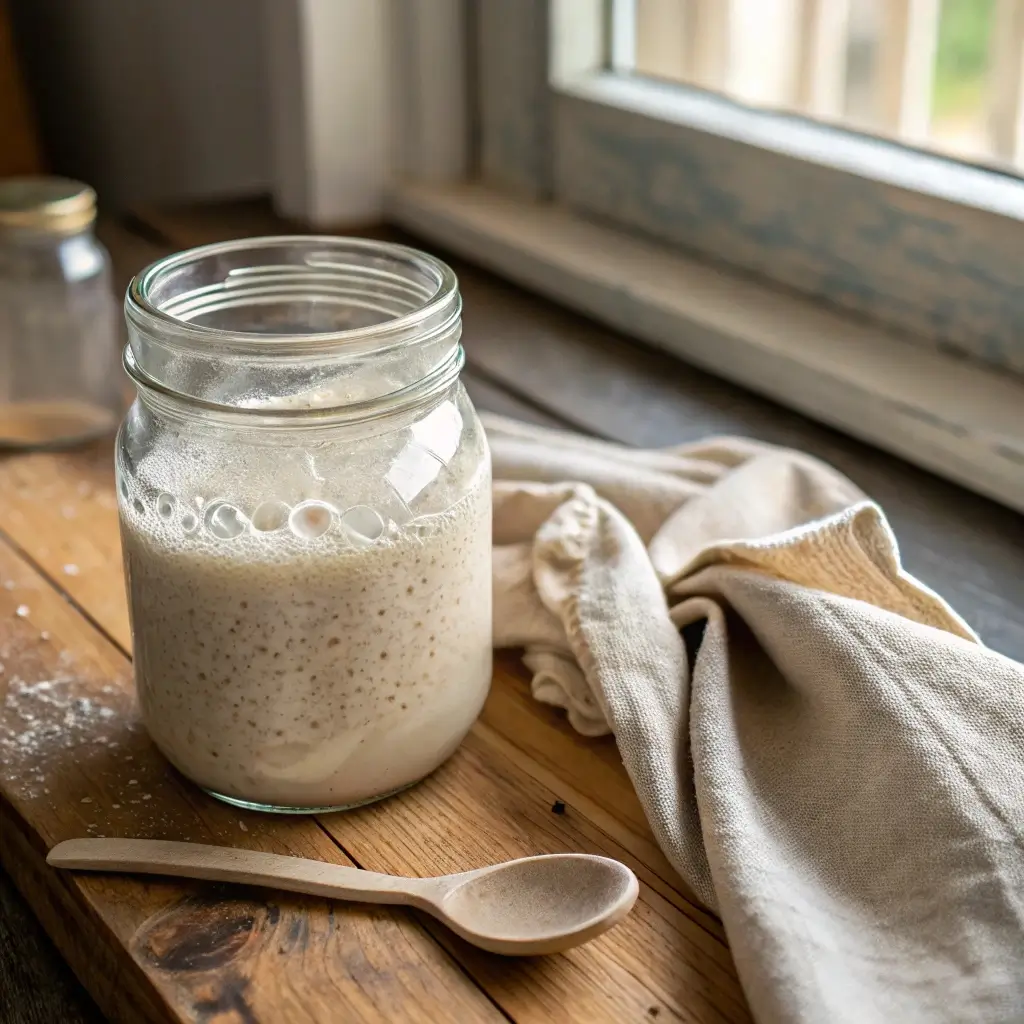
If you don’t already have a sourdough starter, you’ll need to activate one a few days before starting your rolls. Once activated, your starter should be bubbly and have a slightly sour scent. If you’re using an existing starter, make sure it’s well-fed and ready to go.
2. Mixing the Dough
In a large mixing bowl, combine:
- 1 cup of sourdough starter (fed or unfed)
- 1/2 cup of warm milk
- 1/2 cup of softened butter
- 2 tablespoons of sugar
- 1 large egg
Stir until combined and smooth. In a separate bowl, mix the dry ingredients:
- 4 cups of bread flour
- 1 teaspoon of salt
Gradually add the dry ingredients into the wet mixture, stirring until the dough begins to come together. If necessary, add a little more flour, one tablespoon at a time, until the dough is soft but not too sticky.
3. Kneading the Dough
Turn the dough onto a lightly floured surface. Knead for about 8-10 minutes, or until the dough is smooth and elastic. You want it to feel slightly tacky but not sticky. The more you knead, the softer and fluffier your rolls will be.
4. First Rise
Once your dough is kneaded, place it in a greased bowl, cover with a clean towel, and let it rise at room temperature for about 3-4 hours, or until it has doubled in size. If you’re working with a cooler environment, you can let it rise overnight in the refrigerator for a slower fermentation that will develop more flavor.
5. Rolling Out the Dough
Once the dough has doubled, punch it down to release the air bubbles. Turn it out onto a floured surface and roll it into a rectangle, about 18 inches by 12 inches.
6. Adding the Cinnamon Filling
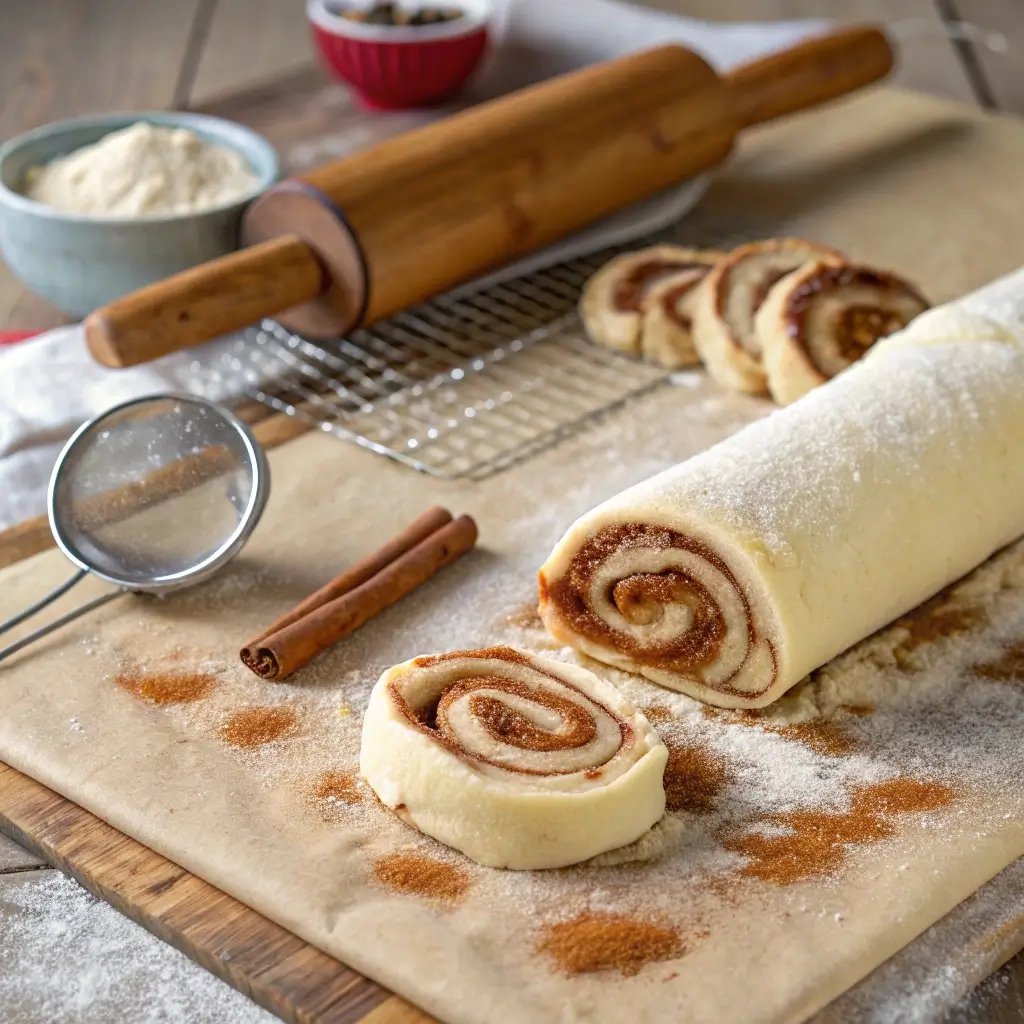
Now comes the fun part—the cinnamon-sugar filling. Spread 1/2 cup of softened butter all over the rolled-out dough. Then, sprinkle with a mixture of:
- 1 cup of brown sugar
- 2 tablespoons of cinnamon
- 1/2 teaspoon of salt (optional, but enhances flavor)
Use a spatula to evenly spread the cinnamon-sugar mixture over the dough.
7. Rolling the Dough
Carefully roll the dough into a tight log, starting from the long side. Be gentle to keep the filling intact. Once rolled, pinch the seams to seal. Use a sharp knife or dental floss to cut the dough into 12 equal slices.
8. Second Rise
Place the cinnamon roll slices into a greased baking dish, making sure they are close together but not touching. Cover with a towel and let them rise for about 1-2 hours, or until they puff up and touch each other.
9. Baking the Rolls
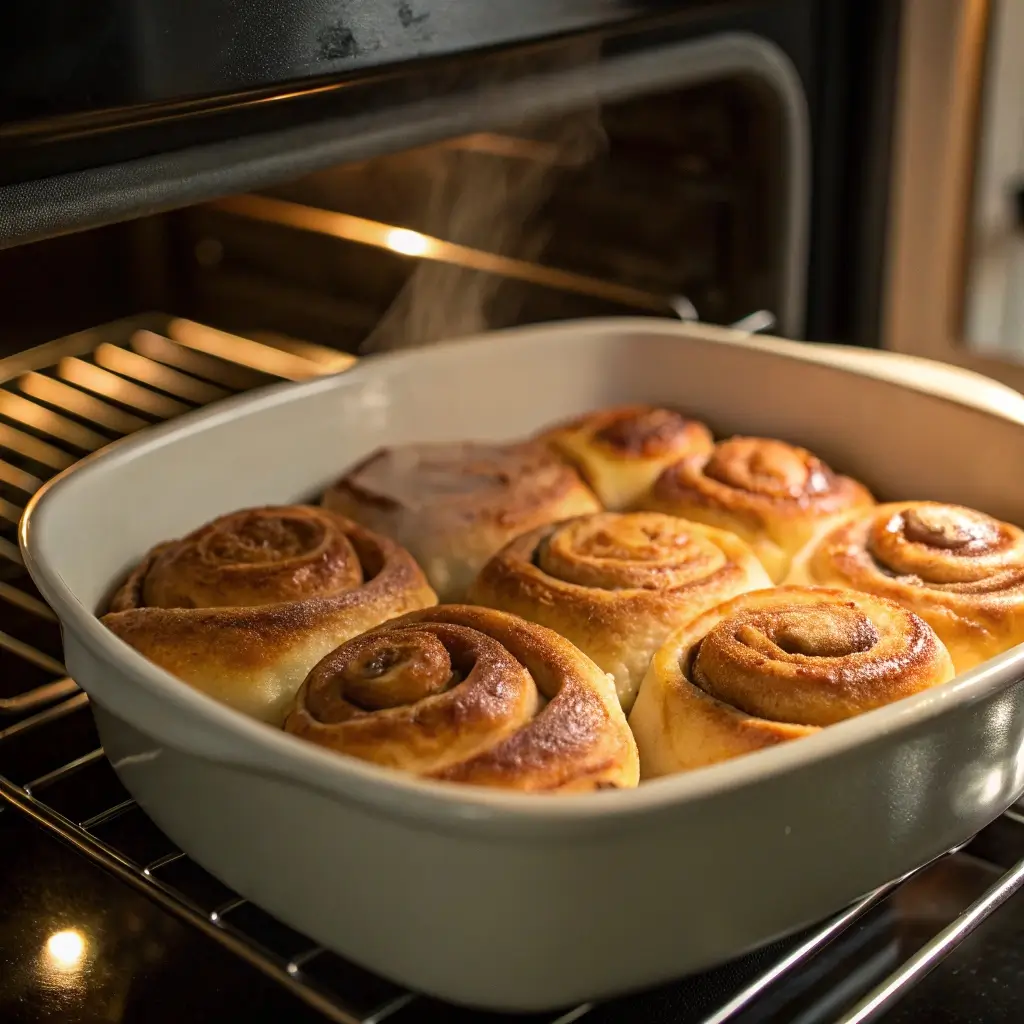
Preheat your oven to 375°F (190°C). Bake the rolls for about 20-25 minutes, or until they are golden brown and the cinnamon-sugar filling is bubbling. The rolls should be soft and slightly caramelized on the edges.
10. Cooling
Once the rolls are done baking, remove them from the oven and let them cool in the pan for about 10 minutes. This allows the filling to set before adding the glaze.
Tips for Perfect Sourdough Cinnamon Rolls
- Patience is key: Sourdough dough needs time to rise, so don’t rush it. The longer rise helps develop the signature tangy flavor.
- Flour matters: For best results, use bread flour to get that chewy, tender texture.
- Temperature control: Ensure your milk is warm but not hot when adding it to the dough—this helps activate the sourdough starter without killing the yeast.
- Shape your rolls tightly: When rolling up the dough, make sure it’s snug to prevent air pockets and uneven rolls.
By following these steps, you’ll have a batch of sourdough cinnamon rolls with the perfect balance of tangy dough, gooey cinnamon filling, and a soft, pillowy texture.
Icing and Glaze Options for Sourdough Cinnamon Rolls
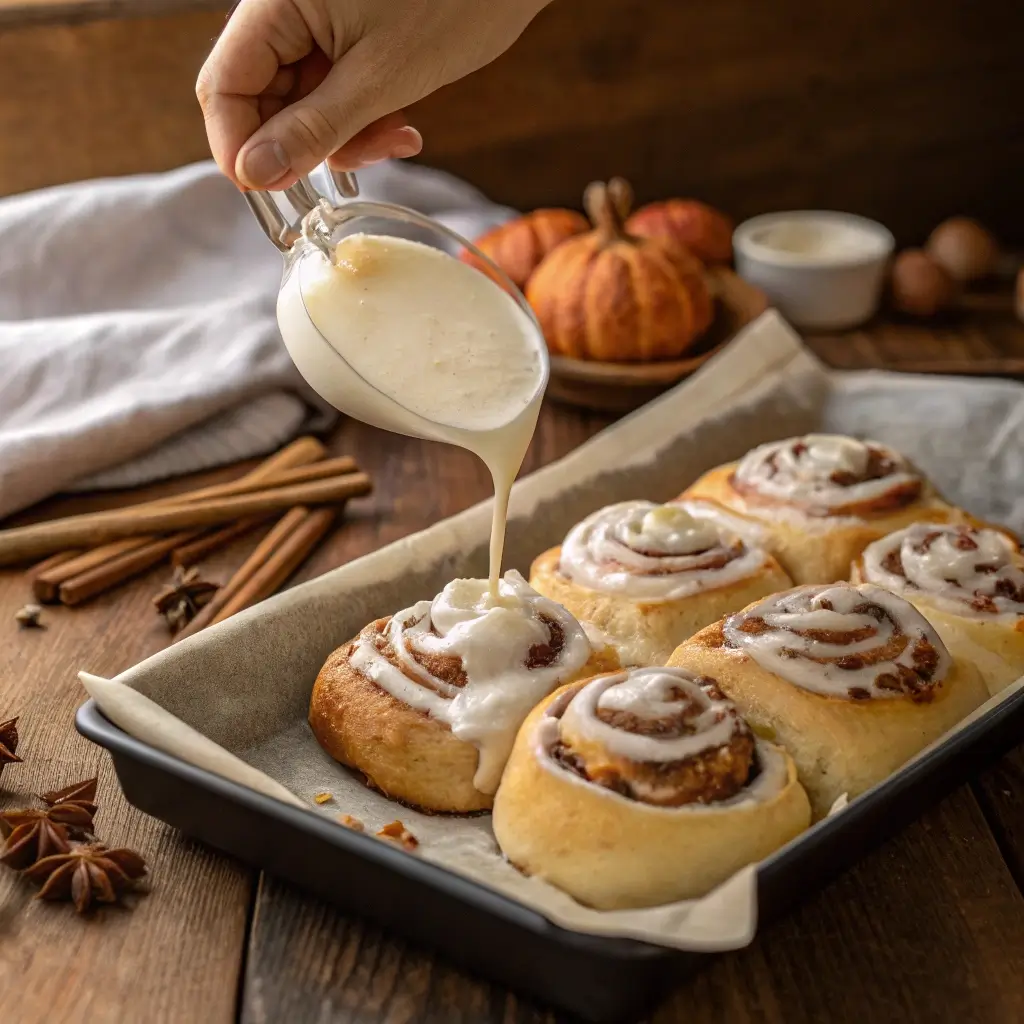
No cinnamon roll is complete without a decadent glaze to tie it all together. There are several icing and glaze options you can choose from, depending on your taste preferences. Here are some options to consider:
The Best Glazes for Sourdough Cinnamon Rolls
-
Classic Cream Cheese Glaze
The tangy cream cheese glaze is a perfect complement to the slightly sour dough of the cinnamon rolls. To make it, simply combine:- 4 oz. cream cheese, softened
- 1 cup powdered sugar
- 2-3 tablespoons milk
- 1 teaspoon vanilla extract
Whisk until smooth and creamy, and drizzle generously over your warm rolls.
-
Simple Vanilla Glaze
If you’re looking for something quick and easy, a basic vanilla glaze is the way to go. Mix together:- 1 cup powdered sugar
- 1-2 tablespoons milk
- 1 teaspoon vanilla extract
Stir until smooth, and pour over your cinnamon rolls for a sweet and simple finish.
-
Maple Glaze
For a more unique, sweet twist, try a maple glaze. This glaze pairs well with the cinnamon rolls’ flavor, adding a warm, earthy sweetness. To make it, combine:- 1/2 cup powdered sugar
- 2 tablespoons maple syrup
- 1-2 tablespoons milk
Mix until smooth and drizzle over your rolls for a rich, maple-flavored treat.
How to Glaze Your Cinnamon Rolls for Maximum Flavor
When glazing your rolls, there are a few tips to keep in mind:
- Drizzle while warm: It’s best to apply the glaze while the rolls are still warm so it soaks into the top and adds extra sweetness.
- Don’t overdo it: You don’t need a thick layer of glaze—just a light drizzle will enhance the flavor without overwhelming the rolls.
- Mix it up: Feel free to get creative with your glazes. You can add spices like cinnamon or nutmeg to your glaze for an extra flavor boost.
With these glazing options, your sourdough cinnamon rolls will be the perfect balance of sweet and tangy—definitely a crowd-pleaser!
Sourdough Cinnamon Rolls Tips and Troubleshooting
Baking sourdough cinnamon rolls can be an incredibly satisfying experience, but like with any recipe, things can occasionally go awry. Here are some helpful tips and troubleshooting ideas to ensure that your rolls turn out perfectly every time!
Sourdough Cinnamon Rolls Troubleshooting and Tips
1. Dough Too Sticky?
Sometimes the dough can feel too sticky to handle. This usually happens if there’s too much moisture in the dough. If you find yourself in this situation, don’t panic! Add flour, a tablespoon at a time, until the dough becomes more manageable. However, be careful not to add too much flour, as it could affect the texture of the final product. The dough should be slightly tacky, but not sticky.
2. Dough Not Rising?
If your dough is sluggish or not rising as expected, there are a few potential causes:
- Your sourdough starter may not be active enough. Ensure it’s been properly fed and allowed to reach peak activity before use.
- The room temperature may be too cold for the dough to rise. Try placing the dough in a warmer area (like near an oven or on top of a heating pad) or extend the rising time.
- For a faster rise, consider using a bit of yeast in combination with your starter.
3. Rolls Are Too Dense?
Dense rolls could result from over-kneading the dough or not giving it enough time to rise. Be sure to knead the dough until it’s smooth and elastic, but don’t overdo it. Additionally, if you cut the rolls too large or don’t allow them to rise long enough, the result might be a denser texture. Allowing proper rising time is essential for soft, fluffy rolls.
4. Burnt Cinnamon Rolls?
If your rolls are getting too dark on top, they might be baking too long or your oven temperature might be too high. Try lowering the oven temperature by 10-15°F (about 5-7°C) and check on the rolls 5 minutes earlier to ensure they don’t overbake.
5. Filling Leaking Out?
If your cinnamon-sugar filling is leaking out during baking, it could be because the dough wasn’t rolled tightly enough. Be sure to roll it snugly but not too tight, and seal the edges well so that the filling stays contained.
By following these troubleshooting tips, you’ll be on your way to creating consistently amazing sourdough cinnamon rolls!
Frequently Asked Questions about Sourdough Cinnamon Rolls
Can I make sourdough cinnamon rolls without a starter?
Yes, you can! If you don’t have a sourdough starter, you can use a mix of active dry yeast and a small amount of sourdough discard (if you have it). The rolls won’t have the same depth of flavor as those made with a sourdough starter, but they’ll still be delicious.
How do I store sourdough cinnamon rolls?
Store your sourdough cinnamon rolls in an airtight container at room temperature for up to 3 days. You can also wrap them individually in plastic wrap and freeze them for up to 3 months. To reheat, simply microwave for about 20-30 seconds, or warm them up in the oven.
Can I make sourdough cinnamon rolls ahead of time?
Yes, you can prepare your rolls the night before! After rolling and slicing the dough, place the rolls in a greased baking dish, cover with plastic wrap, and refrigerate overnight. The next morning, allow the rolls to come to room temperature before baking as usual.
If you’re unsure about the shelf life of your sourdough discard, our article on How Long Is Sourdough Discard Good For has all the answers to keep your baking safe and tasty.
What’s the difference between sourdough and regular cinnamon rolls?
The primary difference is the flavor. Sourdough cinnamon rolls have a tangy, complex flavor that comes from the natural fermentation process of the sourdough starter. Regular cinnamon rolls, made with yeast, tend to have a sweeter, lighter flavor without the tanginess of sourdough.
Can I freeze the dough before baking?
Absolutely! After the second rise and before baking, you can freeze the unbaked rolls. Once they’re shaped and in the baking dish, wrap them tightly in plastic wrap and freeze. When you’re ready to bake, let them thaw in the refrigerator overnight and allow them to rise at room temperature before baking.
Why is my sourdough starter not working for cinnamon rolls?
If your starter isn’t bubbling or rising properly, it may not be fully matured or active enough. Be sure to feed your starter regularly and give it time to develop before using it in your recipe. If you’re using a store-bought starter, follow the instructions on the packaging for activation.
If you don’t have a sourdough starter or happen to have some sourdough discard leftover, don’t toss it! Check out creative ideas and recipes for using sourdough discard in our detailed guide on What Can I Do With Sourdough Discard. This can help reduce waste and add delicious flavors to other baked goods.
Creative Variations on the Sourdough Cinnamon Rolls
One of the joys of baking is getting creative with the flavors and ingredients! If you’re looking to try something a little different with your sourdough cinnamon rolls, here are a few variations to consider:
Fun and Tasty Variations on Sourdough Cinnamon Rolls
-
Caramel Pecan Sourdough Cinnamon Rolls Add a decadent twist by placing a layer of caramel sauce and chopped pecans in the bottom of the baking dish before adding your rolls. When baked, the rolls will be infused with a sweet, nutty caramel flavor.
-
Apple Cinnamon Sourdough Rolls For a fall-inspired treat, add thinly sliced apples and a sprinkle of cinnamon directly into the dough before rolling it up. The apples will bake beautifully into the rolls, adding sweetness and moisture.
-
Vegan Sourdough Cinnamon Rolls For a vegan version, substitute the butter with coconut oil and use a non-dairy milk like almond or oat milk. You can also use a flaxseed egg or chia seed egg as a substitute for the regular egg in the dough.
-
Chocolate Sourdough Cinnamon Rolls Add some chocolate chips or cocoa powder to your filling for a richer, dessert-like treat. The chocolate pairs wonderfully with the cinnamon and adds a fun twist on the classic.
More Cinnamon-Inspired Recipes You’ll Love
-
Cinnamon Roll French Toast Bites – A fun, crispy take on classic rolls
-
Cinnamon Sweet Potato Breakfast Cookies – A wholesome, on-the-go breakfast option
Experiment with Your Own Twist
Feel free to get creative with your own variations. You can mix in different spices like nutmeg or cardamom for added depth of flavor, or use flavored syrups in your glaze. The possibilities are endless, so don’t be afraid to experiment!
Conclusion and Final Thoughts
Homemade sourdough cinnamon rolls are the perfect combination of tangy, soft, and sweet, making them a treat everyone will love. While the process may take time, the result is completely worth it. Whether you stick with the classic recipe or try out creative variations, these rolls are sure to impress. So, roll up your sleeves, get baking, and enjoy these irresistible treats fresh from the oven!
Happy baking!
Print
Sourdough Cinnamon Rolls Recipe
Soft, fluffy, and irresistibly gooey, these sourdough cinnamon rolls are a delicious twist on a classic. The natural fermentation from the sourdough starter adds a tangy complexity, perfectly complementing the sweet cinnamon-sugar filling and creamy glaze.
- Total Time: 55 minutes
- Yield: 12 rolls 1x
Ingredients
For the Dough:
- 1 cup sourdough starter (fed or unfed)
- ½ cup warm milk (or almond/oat milk for dairy-free)
- ½ cup unsalted butter, softened
- 2 tablespoons sugar
- 1 large egg
- 4 cups bread flour
- 1 teaspoon salt
For the Filling:
- ½ cup softened butter
- 1 cup brown sugar
- 2 tablespoons cinnamon
- ½ teaspoon salt (optional)
For the Cream Cheese Glaze (optional):
- 4 oz. cream cheese, softened
- 1 cup powdered sugar
- 2–3 tablespoons milk
- 1 teaspoon vanilla extract
Instructions
- Prepare Starter:
Make sure your sourdough starter is active and bubbly. - Mix Dough:
In a bowl, mix the sourdough starter, warm milk, butter, sugar, and egg. In another bowl, whisk together bread flour and salt. Gradually add the dry ingredients to the wet until a dough forms. - Knead Dough:
Knead on a floured surface for 8–10 minutes until smooth and elastic. - First Rise:
Place dough in a greased bowl, cover, and let rise for 3–4 hours at room temperature or overnight in the fridge. - Roll Dough:
Punch down dough and roll into a rectangle (~18×12 inches). - Add Filling:
Spread softened butter, then sprinkle the brown sugar, cinnamon, and salt mix evenly. - Shape Rolls:
Roll up from the long edge, pinch seam to seal, and cut into 12 slices. - Second Rise:
Arrange rolls in a greased baking dish. Let rise 1–2 hours until puffed and touching. - Bake:
Preheat oven to 375°F (190°C). Bake for 20–25 minutes until golden brown. - Glaze:
Let cool 10 minutes. Mix glaze ingredients and drizzle over warm rolls.
Notes
- For a dairy-free version, use plant-based butter and milk.
- Want a quicker rise? Add a pinch of commercial yeast to the dough.
- Store leftovers in an airtight container for 3 days or freeze for up to 3 months.
- Try variations like apple, pecan, or chocolate cinnamon rolls!
- Prep Time: 30 minutes
- Cook Time: 25 minutes
- Category: Dessert
- Method: Baking
- Cuisine: American
- Diet: Vegetarian
Nutrition
- Serving Size: 1 roll
- Calories: 280
- Sugar: 14g
- Sodium: 190mg
- Fat: 12g
- Saturated Fat: 7g
- Unsaturated Fat: 4g
- Trans Fat: 0 g
- Carbohydrates: 36g
- Fiber: 1g
- Protein: 5g
- Cholesterol: 45mg
Keywords: sourdough cinnamon rolls, homemade cinnamon rolls, tangy sweet rolls, sourdough baking, breakfast treat
